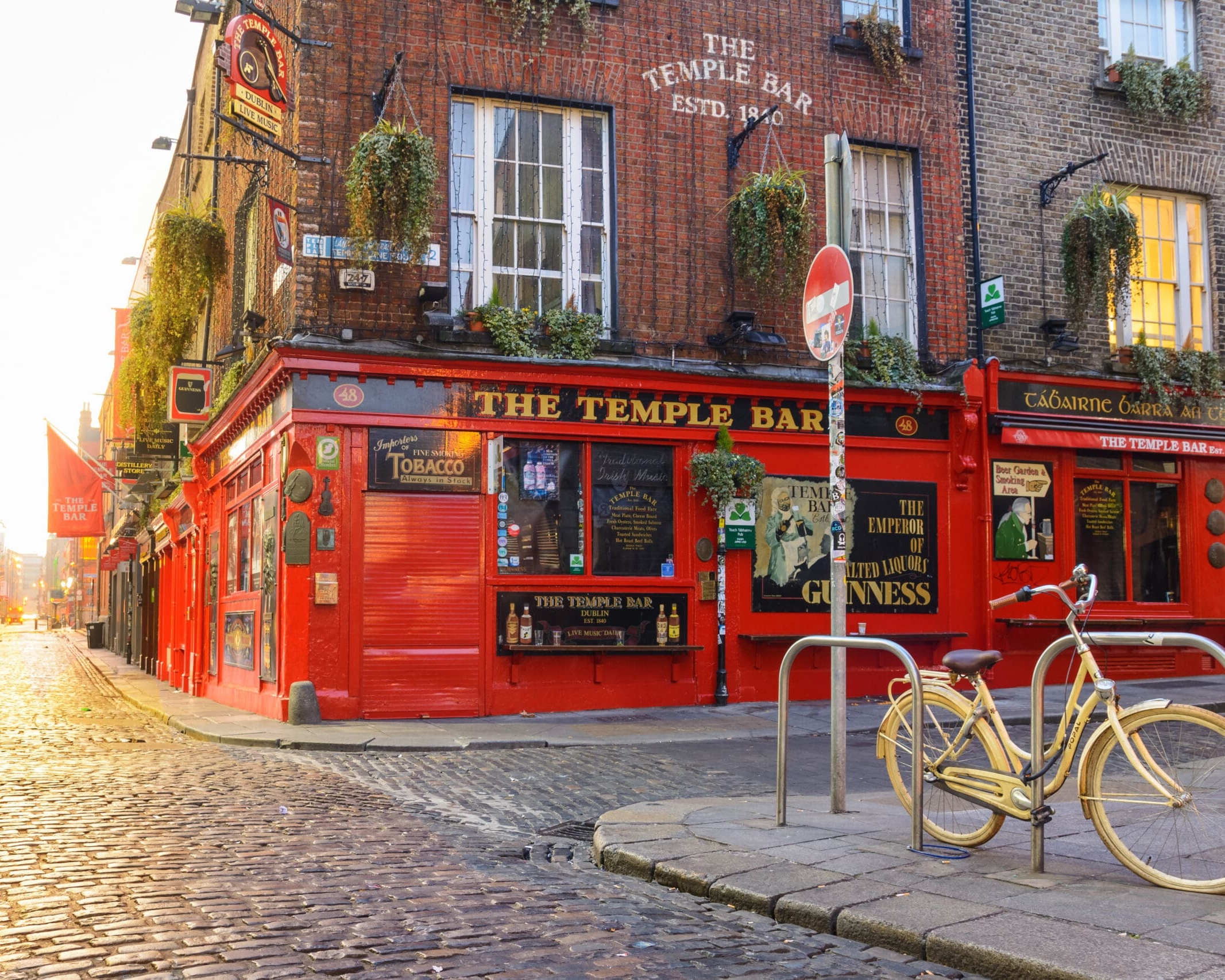Welcome to Ireland, where myth and reality intertwine under emerald skies, and landscapes tell tales as ancient as time itself.
This is a land where every stone, castle, and winding path has a story, where the warmth of the locals is as inviting as a cozy fire on a cold day. From the rugged cliffs of Moher that defy the Atlantic’s might, to the mystical beauty of the Giant’s Causeway, from the lively streets of Dublin brimming with history and culture, to the tranquil, rolling hills of the countryside, Ireland is an enchanting blend of natural beauty, ancient heritage, and vibrant modern life.
Here, you’ll discover not just the breathtaking scenery that has earned Ireland its nickname, “The Emerald Isle,” but also a rich cultural tapestry woven with music, literature, and traditional festivities.
Whether you’re kissing the Blarney Stone, exploring the historic halls of Trinity College, or enjoying a pint of Guinness in a lively pub, Ireland offers a warm welcome that feels like coming home.
As we guide you through the heart of the Celtic isle, we’ll share insider tips on navigating its diverse regions, indulging in its culinary delights, and uncovering hidden gems that make Ireland uniquely captivating. Prepare to be charmed by the tales of yore, inspired by the rugged beauty, and moved by the genuine hospitality of its people.

The Best Time To Visit
The best time to visit Ireland is during its shoulder seasons, which run from May to June and September to October. During these months, you’ll enjoy mild weather, fewer crowds, and the beautiful bloom of spring or the golden hues of autumn. The countryside is especially picturesque at these times, with vibrant colors and wildlife.
The summer months of July and August offer the warmest weather and the longest days, making them popular for tourists. This period is ideal for exploring Ireland’s stunning landscapes and enjoying the numerous festivals that take place. However, be prepared for more crowded attractions and higher prices.
While winter (November to February) brings cooler temperatures and shorter days, it also offers its own charm with fewer tourists, cozy pub atmospheres, and potentially lower travel costs. Plus, you might get to experience the wild beauty of Ireland’s coastlines under dramatic winter skies.
Ultimately, the best time for your visit depends on your personal preferences, whether it’s the tranquil beauty of the shoulder seasons, the vibrant life of summer, or the serene solitude of winter.
What To Know
In Ireland, English is the primary language spoken. However, Irish (Gaelic or Gaeilge) is also an official language and is taught in schools as a compulsory subject.
In the Republic of Ireland, the currency used is the Euro.
Since Ireland is a member of the European Union, the Euro is used for most transactions, from dining and shopping to accommodations and services.
In Northern Ireland, which is part of the United Kingdom, the currency used is the Pound Sterling (GBP), symbolized as £.
It’s important for travelers to note this distinction, especially when traveling between the Republic of Ireland and Northern Ireland, as they will need to use different currencies in each jurisdiction.
Ireland is widely regarded as a safe country for travelers, known for its friendly locals and low crime rate. Violent crime is rare, and tourists can generally feel secure exploring the country, including its vibrant cities and scenic rural areas.
However, as with any destination, it’s important to take standard safety precautions. This includes being mindful of your belongings, especially in crowded or tourist-heavy areas where pickpocketing can occur, and staying informed about the areas you plan to visit.
In larger cities like Dublin, Cork, and Galway, it’s wise to exercise the same caution you would in any urban area, such as avoiding unlit or unfamiliar streets late at night and keeping an eye on your personal belongings in busy spots.
Ireland’s public transport network offers a convenient and efficient way to travel across the country.
In major cities like Dublin, Cork, Galway, and Limerick, comprehensive systems of buses, trains, and trams provide urban and suburban coverage. Rural areas are served by buses operated by Bus Éireann, ensuring access even to remote locations.
Irish Rail connects major cities and towns with intercity train services, known for their comfort and scenic routes. Dublin’s Luas tram system complements the bus and rail network in the capital. Taxis and ride-sharing services are widely available, while cycling and walking are encouraged in city centers.
Overall, Ireland’s public transport system caters to diverse travel needs, providing visitors with reliable and convenient options for exploring the country.
